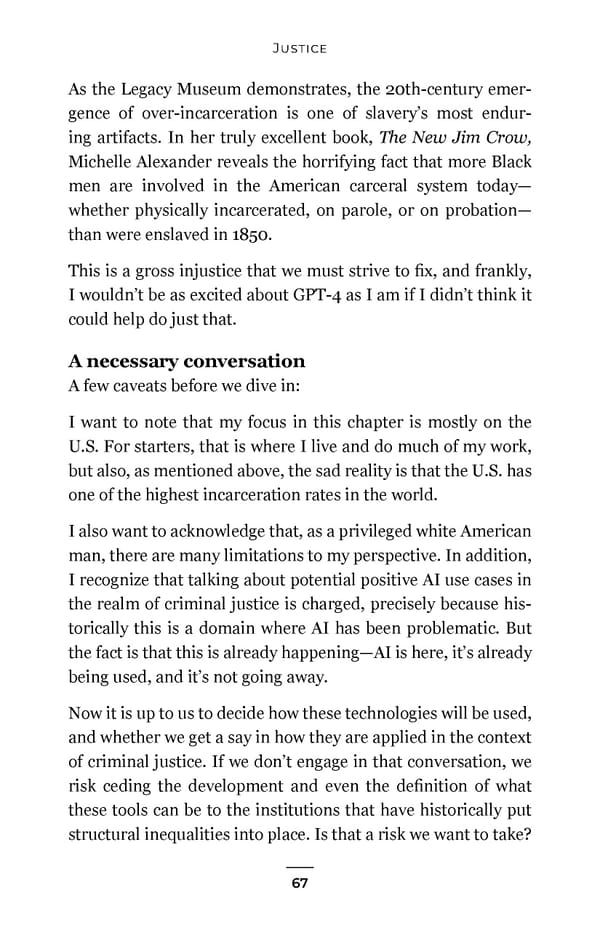Justice As the Legacy Museum demonstrates, the 20th-century emer- gence of over-incarceration is one of slavery’s most endur- ing artifacts. In her truly excellent book, The New Jim Crow, Michelle Alexander reveals the horrifying fact that more Black men are involved in the American carceral system today— whether physically incarcerated, on parole, or on probation— than were enslaved in 1850. This is a gross injustice that we must strive to fix, and frankly, I wouldn’t be as excited about GPT-4 as I am if I didn’t think it could help do just that. A necessary conversation A few caveats before we dive in: I want to note that my focus in this chapter is mostly on the U.S. For starters, that is where I live and do much of my work, but also, as mentioned above, the sad reality is that the U.S. has one of the highest incarceration rates in the world. I also want to acknowledge that, as a privileged white American man, there are many limitations to my perspective. In addition, I recognize that talking about potential positive AI use cases in the realm of criminal justice is charged, precisely because his- torically this is a domain where AI has been problematic. But the fact is that this is already happening—AI is here, it’s already being used, and it’s not going away. Now it is up to us to decide how these technologies will be used, and whether we get a say in how they are applied in the context of criminal justice. If we don’t engage in that conversation, we risk ceding the development and even the definition of what these tools can be to the institutions that have historically put structural inequalities into place. Is that a risk we want to take? 67
 Impromptu by Reid Hoffman with GPT-4 Page 73 Page 75
Impromptu by Reid Hoffman with GPT-4 Page 73 Page 75